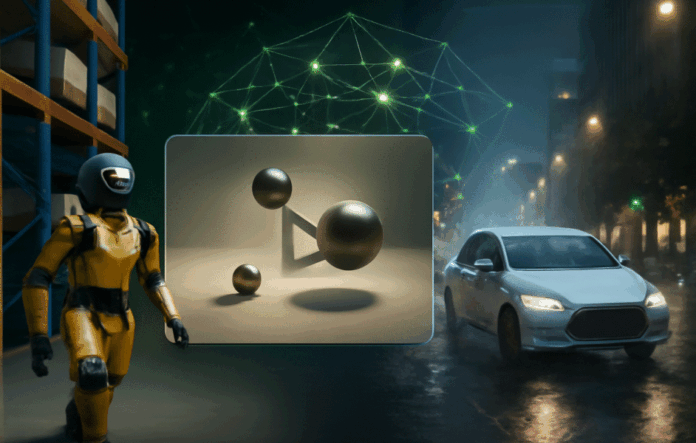Introduction to Physical AI
Physical AI refers to artificial intelligence systems that can perceive, understand, and act within the physical world. Unlike traditional AI, which might analyze text or images, physical AI must deal with real-world complexities like spatial relationships, physical forces, and dynamic environments. For example, a self-driving car needs to recognize pedestrians, predict their movements, and adjust its path in real time, while considering factors like weather and road conditions. Similarly, a robot in a warehouse must navigate obstacles and manipulate objects with precision.
The Challenge of Data Collection
Developing physical AI is challenging because it requires vast amounts of data to train models on diverse real-world scenarios. Collecting this data, whether it’s hours of driving footage or robotic task demonstrations, can be time-consuming and expensive. Moreover, testing AI in the real world can be risky, as mistakes could lead to accidents. To address these challenges, NVIDIA has developed the Cosmos platform, which uses physics-based simulations to generate realistic synthetic data. This approach simplifies and accelerates the development of physical AI systems.
What Are World Foundation Models?
At the core of NVIDIA Cosmos is a collection of AI models called world foundation models (WFMs). These AI models are specifically designed to simulate virtual environments that closely mimic the physical world. By generating physics-aware videos or scenarios, WFMs simulate how objects interact based on spatial relationships and physical laws. For instance, a WFM could simulate a car driving through a rainstorm, showing how water affects traction or how headlights reflect off wet surfaces.
How World Foundation Models Work
WFMs are crucial for physical AI because they provide a safe, controllable space to train and test AI systems. Instead of collecting real-world data, developers can use WFMs to generate synthetic data—realistic simulations of environments and interactions. This approach not only reduces costs but also accelerates the development process and allows for testing complex, rare scenarios (such as unusual traffic situations) without the risks associated with real-world testing. WFMs are general-purpose models that can be fine-tuned for specific applications, similar to how large language models are adapted for tasks like translation or chatbots.
NVIDIA Cosmos Platform
NVIDIA Cosmos is a platform designed to enable developers to build and customize WFMs for physical AI applications, particularly in autonomous vehicles (AVs) and robotics. Cosmos integrates advanced generative models, data processing tools, and safety features to develop AI systems that interact with the physical world. The platform is open source, with models available under permissive licenses.
Key Components of NVIDIA Cosmos
The key components of the platform include:
- Generative World Foundation Models (WFMs): Pre-trained models that simulate physical environments and interactions.
- Advanced Tokenizers: Tools that efficiently compress and process data for faster model training.
- Accelerated Data Processing Pipeline: A system for handling large datasets, powered by NVIDIA’s computing infrastructure.
Key Features of NVIDIA Cosmos
NVIDIA Cosmos provides various components for addressing specific challenges in physical AI development:
- Cosmos Transfer WFMs: These models take structured video inputs, such as segmentation maps, depth maps, or lidar scans, and generate controllable, photorealistic video outputs.
- Cosmos Predict WFMs: Cosmos Predict models generate virtual world states based on multimodal inputs, including text, images, and video.
- Cosmos Reason WFM: The Cosmos Reason model is a fully customizable WFM with spatiotemporal awareness.
Applications and Use Cases
NVIDIA Cosmos is already having a significant impact on the industry, with several leading companies adopting the platform for their physical AI projects. These early adopters highlight the versatility and practical impact of Cosmos across various sectors:
- 1X: Using Cosmos for advanced robotics to improve their ability to develop AI-driven robots.
- Agility Robotics: Expanding their partnership with NVIDIA to utilize Cosmos for humanoid robotic systems.
- Figure AI: Utilizing Cosmos to advance humanoid robotics, focusing on AI that can perform complex tasks.
- Foretellix: Applying Cosmos in autonomous vehicle simulation to generate a wide range of testing scenarios.
- Skild AI: Using Cosmos to develop AI-driven solutions for various applications.
- Uber: Integrating Cosmos into their autonomous vehicle development to improve training data for self-driving systems.
- Oxa: Using Cosmos to accelerate industrial mobility automation.
- Virtual Incision: Exploring Cosmos for surgical robotics to improve precision in healthcare.
Future Implications
The launch of NVIDIA Cosmos is important for the development of physical AI systems. By offering an open-source platform with powerful tools and models, NVIDIA is making physical AI development accessible to a wider range of developers and organizations. This could lead to significant advancements in several areas, including autonomous transportation, robotics, and healthcare.
Conclusion
NVIDIA Cosmos plays a vital role in the development of physical AI. This platform allows developers to generate high-quality synthetic data by providing pre-trained, physics-based world foundation models (WFMs) for creating realistic simulations. With its open-source access, advanced features, and ethical safeguards, Cosmos is enabling faster, more efficient AI development. The platform is already driving major advancements in industries like transportation, robotics, and healthcare, by providing synthetic data for building intelligent systems that interact with the physical world.

